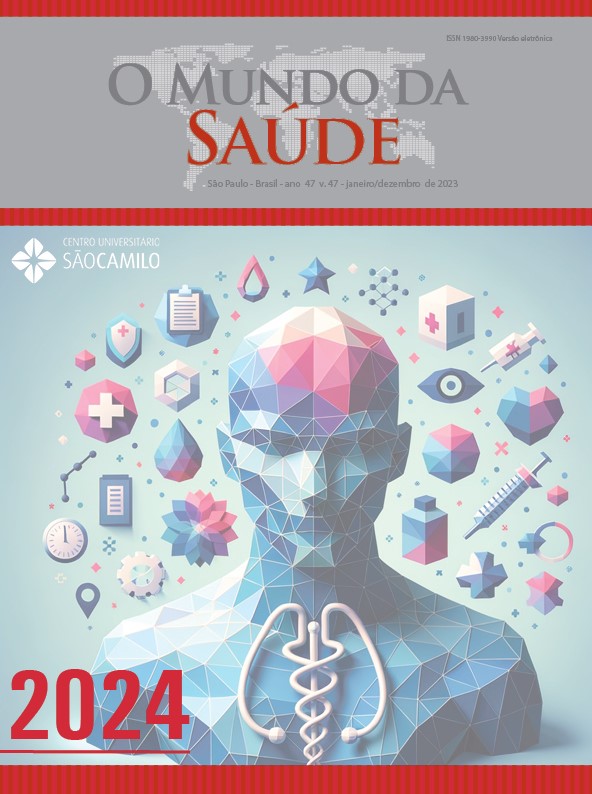14q24.1 DELETION: phenotypic characteristics and response to the use of recombinant human growth hormone
DOI:
https://doi.org/10.15343/0104-7809.202448e15712023PKeywords:
Genetics, Chromosome 14, Growth HormoneAbstract
Structural chromosomal changes on chromosome 14 are uncommon and can lead to a diverse spectrum of clinical manifestations, including hypotonia, delayed psychomotor development, cognitive deficits, and facial dysmorphisms. The specific phenotype is influenced by the location, extent, and breakpoints of the deletion. This case report aims to detail the phenotype and genotype of a preschooler with 14q24.1 deletion, in addition to documenting the response to treatment with recombinant human growth hormone (rhGH). The patient, a premature female, born with appropriate measurements for gestational age and daughter of non-consanguineous parents, presented respiratory discomfort and swallowing difficulties in the neonatal period, requiring gastrostomy until the first year of life. Between birth and two years and six months, she presented a reduction in growth speed and disproportionate short stature. Bilateral upper eyelid tilt, low ear insertion, posterior cleft palate, irregular dentition, micrognathia, retrognathia, scoliosis, shortening of the right femur with antalgic gait, agenesis of the left kidney and pelvic positioning of the right kidney were also observed. Furthermore, the patient exhibited delayed neuropsychomotor development. Genetic analysis revealed a deletion on the long arm of chromosome 14 of approximately 231 Kb. With rhGH treatment, an improvement in growth rate and final height was observed. The clinical evolution of the case indicates that the administration of rhGH, associated with strict clinical monitoring and treatment of comorbidities, can contribute to the improvement of anthropometric parameters.
Downloads
References
Clancy S, Shaw K. DNA deletion and duplication and the associated genetic disorders. Nat Educ. 2008;1(1):23.
Kamnasaran D, Cox DW. Current status of human chromosome 14. J Med Genet. 2002;39:81-90. doi:10.1136/jmg.39.2.81.
Louhelainen J. SNP Arrays. Microarrays (Basel). 2016 Oct 25;5(4):27. doi:10.3390/microarrays5040027.
Wang H, Wu D, Qin L, Wang T, Zhang H, Xing M, Liao S. [Fenotípica e análise genética de uma criança com múltiplas malformações devido à deleção do cromossomo 14q]. Zhonghua Yi Xue Yi Chuan Xue Za Zhi. 2016 Jun;33(3):361-4. [em Chinês].
Richmond E, Rogol AD. Treatment of growth hormone deficiency in children, adolescents and at the transitional age. Best Pract Res Clin Endocrinol Metab. 2016 Dec;30(6):749-755. doi:10.1016/j.beem.2016.11.002.
Goyal C, Goyal V, Naqvi WM. Goyal-Naqvi Syndrome (Concurrent Trisomy 10p and Terminal 14q Deletion): A Review of the Literature. Cureus. 2021 Jul 26;13(7):e16652. doi:10.7759/cureus.16652.
Goyal C, Goyal V, Naqvi WM. A Rare and Unusual Case of Trisomy 10p with Terminal 14q Deletion: A Multidisciplinary Approach. Cureus. 2021 Jun 5;13(6):e15459. doi:10.7759/cureus.15459.
Engels H, Schüler HM, Zink AM, Wohlleber E, Brockschmidt A, Hoischen A, Drechsler M, Lee JA, Ludwig KU, Kubisch C, Schwanitz G, Weber RG, Leube B, Hennekam RC, Rudnik-Schöneborn S, Kreiss-Nachtsheim M, Reutter H. A phenotype map for 14q32.3 terminal deletions. Am J Med Genet A. 2012 Apr;158A(4):695-706. doi:10.1002/ajmg.a.35253.
Sutton VR, Shaffer LG. Search for imprinted regions on chromosome 14: comparison of maternal and paternal UPD cases with cases of chromosome 14 deletion. Am J Med Genet. 2000 Aug 28;93(5):381-7. doi:10.1002/1096-8628(20000828)93:5<381::AID-AJMG9>3.0.CO;2-Z.
von Laue S, Ross RJ. Inflammatory cytokines and acquired growth hormone resistance. Growth Horm IGF Res. 2000 Apr;10 Suppl B:S9-14. doi:10.1054/ghir.2000.0128.
Martín AI, Priego T, Moreno-Ruperez Á, González-Hedström D, Granado M, López-Calderón A. IGF-1 and IGFBP-3 in Inflammatory Cachexia. Int J Mol Sci. 2021 Aug 31;22(17):9469. doi:10.3390/ijms22179469.
Lee P, Fu YP, Figueroa JD, Prokunina-Olsson L, Gonzalez-Bosquet J, Kraft P, et al. Fine mapping of 14q24.1 breast cancer susceptibility locus. Hum Genet. 2012 Mar;131(3):479-90. doi: 10.1007/s00439-011-1088-4. Epub 2011 Sep 30. PMID: 21959381; PMCID: PMC4159746.
Xu W, Lu X, Kim Y, Luo Y, Martin M, Mulvihill JJ, Li S. Deletion of 14q24.1 approximately q24.3 in a patient with acute lymphoblastic leukemia: a hidden chromosomal anomaly detected by array-based comparative genomic hybridization. Cancer Genet Cytogenet. 2008 Aug;185(1):43-6. doi: 10.1016/j.cancergencyto.2008.04.007. PMID: 18656693.
Sävendahl L, et al. Long-term mortality after childhood growth hormone treatment: the SAGhE cohort study. Lancet Diabetes Endocrinol. 2020;8(8):683-692. doi: 10.1016/S2213-8587(20)30152-6. PMID: 32707116.
Boguszewski MCS, et al. Safety of growth hormone replacement in survivors of cancer and intracranial and pituitary tumours: a consensus statement. Eur J Endocrinol. 2022;186(6):35-52. doi: 10.1530/EJE-21-1234. PMID: 35319491.
Downloads
Published
How to Cite
Issue
Section
License
Copyright (c) 2024 O Mundo da Saúde

This work is licensed under a Creative Commons Attribution 4.0 International License.






























